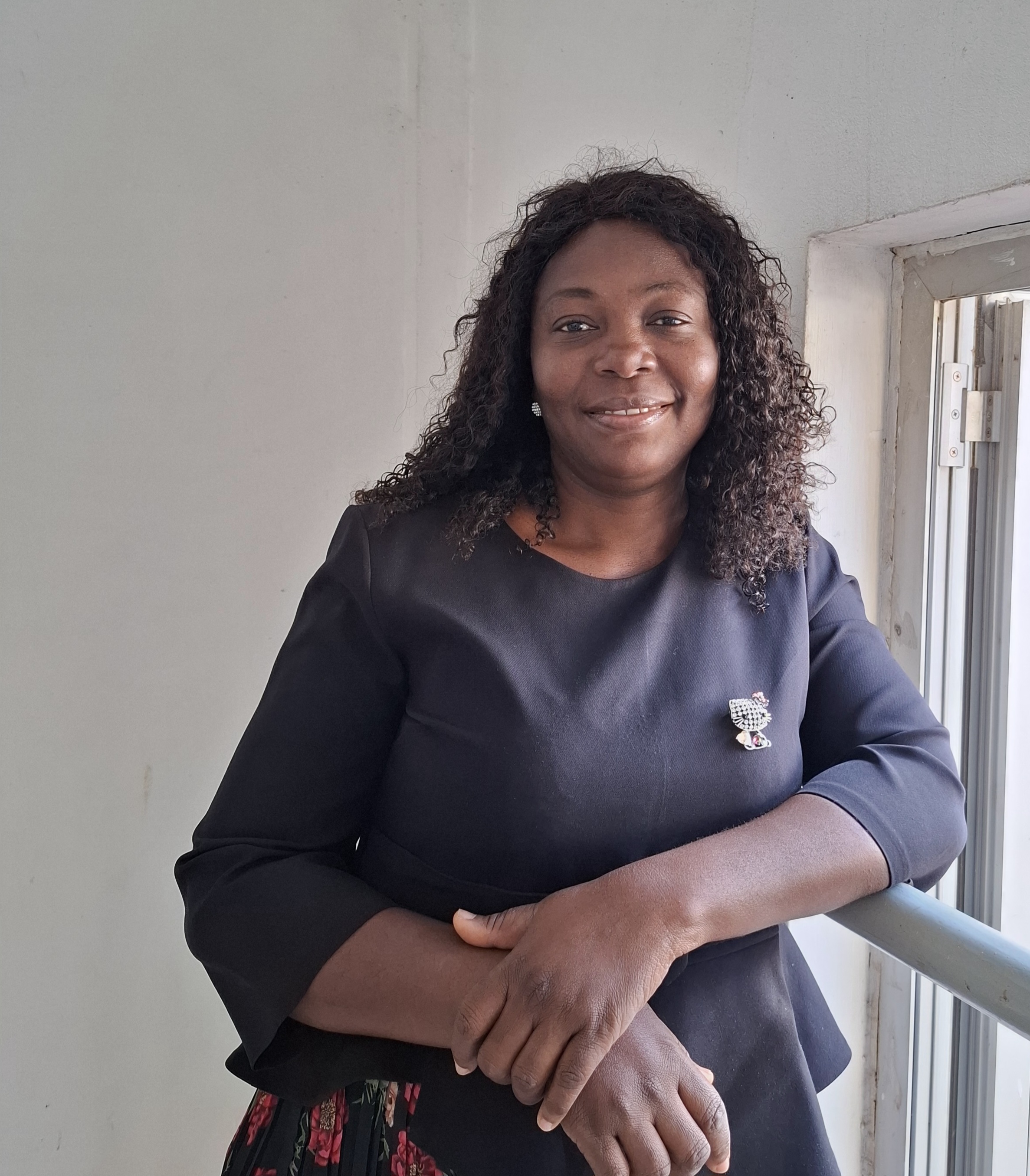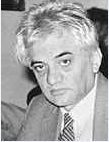Research Article
Assessment of the Knowledge, Attitudes, And Related Attributes of Health Care Providers About Neonatal Resuscitation in Hospitals in Sidama Regional State of Ethiopia, A Cross-Sectional Study
- Abrham Bire *
- Meseret Assefa
Assistant professor of Pediatrics and Child Health, Senior pediatrician, MPH in Epidemiology candidates, Research aspirant, Hawassa University College of Medicine and Health Science, Department of Pediatrics and Child Health, Hawassa, Sidama region, Ethiopia
*Corresponding Author: Abrham Bire, Assistant professor of Pediatrics and Child Health, Senior pediatrician, MPH in Epidemiology candidates, Research aspirant, Hawassa University College of Medicine and Health Science, Department of Pediatrics and Child Health, Hawassa, Sidama
Citation: Bire A, Assefa M. (2025). Assessment of the Knowledge, Attitudes, And Related Attributes of Health Care Providers About Neonatal Resuscitation in Hospitals in Sidama Regional State of Ethiopia, A Cross-Sectional Study. Journal of Clinical Paediatrics and Child Health Care, BioRes Scientia Publishers. 2(1):1-10. DOI: 10.59657/2997-6111.brs.25.018
Copyright: © 2025 Abrham Bire, this is an open-access article distributed under the terms of the Creative Commons Attribution License, which permits unrestricted use, distribution, and reproduction in any medium, provided the original author and source are credited.
Received: March 11, 2025 | Accepted: March 25, 2025 | Published: April 01, 2025
Abstract
Background: Birth asphyxia remains major causes of neonatal mortality in Ethiopia. Most asphyxia related problems defy if medical professionals are proficient in neonatal resuscitation. However, little is known about how well-versed in neonatal resuscitation the health care providers are at Sidama regional state hospitals in Ethiopia.
Objective: To assess the knowledge, attitudes, and related attributes of medical professionals about newborn resuscitation in hospitals in Sidama region of Ethiopia.
Method: A cross-sectional study was employed from October to December 2023, and 192 medical professionals took part as participants. Data was collected via a self-administered questionnaire, and SPSS version 25 was utilized for coding, input and analysis. When a logistic regression analysis unveils correlation, and a value of p< 0.05 with a 95% confidence interval was achieved, a statistically significant relationship was proclaimed.
Result: A response rate of 92.3% was obtained. 62% of the participants’ demonstrated good knowledge about NR, with a mean knowledge score of 20.9. According to the findings, nurses (AOR: 0.07, 95% CI [0.01, 0.32]; p<0.001), those with NR training (AOR: 2.31, 95% CI [1.08, 4.95]; p<0.001), and people with access to guidelines (AOR: 2.45, 95% CI [1.10, 5.41]; p=0.011) knew more about neonatal resuscitation.
Conclusion: 62% of medical experts although they knew enough, the study field of the participants, the availability of guidelines, and the presence of trained medical personnel all had an impact on their knowledge. In addition to teaching fundamental procedures during medical education, simulation-based routines and periodic NR training are required to improve neonatal outcome.
Keywords: neonatal resuscitation; knowledge; health professionals; nicu
Introduction
Neonatal resuscitation is an intervention delivered to an asphyxiated newborn [1]. Neonatal morbidity and mortality are significantly impacted by the quality of neonatal resuscitation and early stabilization during the "golden minute" of birth, especially in high-risk neonates like premature and LBW babies [2]. A delivery attendant may be slightly swayed by the mother's apparent priority over the baby's requirements if she chooses to postpone neonatal resuscitation in order to appease her. [3]. However, a newborn's odds of survival might be significantly impacted by even a little resuscitation postponement. According to studies, a neonate’s chance of dying increased by 16% for every 30 seconds of setback in starting ventilation and by 6% for every minute of lag in starting bag and mask ventilation [4].
Millions of neonates die as a result of inadequate or subpar resuscitation techniques, humorlessly in LMIC, and many of the survivors relentlessly suffer long-term neurologic sequelae such as cerebral palsy and cognitive impairment [5, 6]. Evidence promulgates that competent healthcare professionals can avert over two million infant deaths caused by perinatal asphyxia annually by employing appropriate and effective newborn resuscitation [7]. Even in the unlikely event that COVID-19 has no influence on mortality, there is still a significant burden of child mortality [8].
Globally, an estimated 5 million U5M were reported in 2021, of which neonatal death contributed 47% (2.3 million). Consequently, the percentage of newborn deaths among all U5M rose from 40% in 1990 to 47% in 2021, accounting for a lion's share of all U5M. Worldwide, about 6400 infants perish every day, and over 80% of these deaths are avertable, making neonatal mortality a serious public health issue [9-13]. Sub-Saharan Africa has the highest rate of neonatal mortality in the world, with about 27 infant deaths per 1000 live births, or 43% of all newborn deaths globally [14]. Furthermore, Ethiopia is among the five sub-Saharan African countries contributing 50% of neonatal mortality. A study at Debra Tabor, Dilla University Referral Hospital, Wolaita SodoTeathing Hospital, and Bahir Dar city in northwest Ethiopia found that the rates of peri-natal asphyxia were 29.9%, 32.8%, 25.7%, and 21.7%, respectively [6, 15-17]. Effective newborn resuscitation could prevent 5–10% of preterm birth-related deaths and around 30% of full-term neonatal mortality [12].
The crucial intervention of neonatal resuscitation has the power to save the lives of bairn. Helping Baby to Breath (HBB) addresses not just the science of resuscitation but also important measures to enhance the effectiveness of educational programs and the provision of healthcare services, both of which are essential for enhancing neonatal survival [1]. Therefore, newborn resuscitation by a trained professional is essential to having a sufficient influence on neonatal death linked to asphyxia. Initiating and stabilizing the neonate's cardiopulmonary functioning requires particular knowledge and abilities, and maintaining provider competency requires ongoing practice [18]. Health professionals' competency in neonatal resuscitation and consequently neonatal outcome are influenced by a variety of factors, including provider characteristics like educational level, experience, and specialization as well as institutional characteristics like training, accessibility to guidelines, and equipment [19, 20].
Poor resuscitations are used to carry on, despite the significant impact of asphyxia on neonatal mortality and morbidity. Studies conducted in public health facilities in Eastern Ethiopia validated a lack of basic knowledge on newborn resuscitation among midwives and nurses [21]. A parallel study carried out in South Wollo public hospitals discovered that midwives and nurses know relatively little about neonatal resuscitation [22]. In a similar vein, research among Ethiopian medical professionals indicated a broad ignorance about the procedure [23]. To the best of the investigator's knowledge, our hospital has poignantly carried out no similar studies. Therefore, this study is poised to uncover gaps that contribute to the ongoing rate of neonatal death and disability by assessing the attitudes, knowledge, and relevant characteristics of medical professionals on neonatal resuscitation working at HUCSH in the NICU and delivery room.
Methods and Materials
Study area, design and period
The study was conducted at the pediatric department of the Hawassa University Comprehensive Specialized Hospital in southern Ethiopia. Hawassa is located 275 kilometers southeast of Addis Ababa, Ethiopia's capital city, at an elevation of 1700 meters above sea level. HUCSH is the region's first referral hospital and a teaching hospital, with a catchment population of 10–12 million. It serves roughly 43,384 patients each year. The hospital comprises 11 departments and has introduced new specialized services, including an oncology and toxicology unit.
Pediatrics is one of the departments that care for over 15,000 pediatric patients a year. The level III NICU where this study was conducted has 38 beds, 5 incubators, 16 radiant warmers, 27 BSc nursing staff, 44 pediatric residents, 10 senior pediatricians, a neonatologist, a neurologist, a cardiologist, and an infectious subspecialist. The NICU provide both outpatient and inpatient services, with an average monthly admission rate of 100–150 nurslings for inborn and out-born babies. In respect to the equipment and other facilities, there are enough different oxygen sources available (CPAP). There are twenty beds in the obstetrics ward: three beds for triage examinations, seven prenatal beds, ten postnatal beds, four delivery coaches, twenty-eight midwives, thirty-eight GYN-OBS residents, eleven gynecologists, and eleven obstetricians. All four major wards get a total of approximately 144 medical interns, with an average of 36 interns per ward during each attachment. A cross-sectional study was carried out using self-administered questionnaires in HUCSH from October to December 2023.
Population
The source populations were the entire health care providers concerned on feto-maternal care at parturition working at HUCSH. The study populations were midwives, nurses, residents, and medical interns working in the NICU and obstetrics units during the study period.
Sample size determination
The sample size for the first objective was calculated by an open-source calculator using a single population proportion formula, considering the following assumptions: The knowledge level of the nurses and midwives was 46.5% from the study in Gonder, (24) with a 95% confidence interval and a 5% margin of error. Accordingly, a sample size of 382 was obtained. Since the source population is < 10>. However, to improve the precision of the study, all 208 care providers were included in the study.
Sampling technique and procedure
First, the health professionals were divided into two main units (the NICU and the delivery unit). The leader of each group compiles a roster of health professionals; they are then further categorized depending on their professions as nurses, midwives, medical interns, pediatrics residents, and GYN-OBS residents. Then data collectors distributed self-administered questionnaires and collected sheets within a given time period.
Figure 1: Schematic presentation of sampling procedures for assessment of knowledge and associated factors toward neonatal resuscitation in HUCSH, Sidama, Ethiopia 2024.
PR=Pediatric Residents; GOR= GYN-OBS Resident; MI= Medical Interns
Data collection procedures
The data gathering method for this study was created using similar prior literature, (1, 25) The tool consists of structured self-administered surveys that cover socio-demographic, provider, and institutional aspects, as well as attitude and knowledge assessment questions for health professionals. One week prior to the actual data collection period, it was pretested on 5% of the entire sample size in Adare General Hospital. The unclear questionnaire was changed for clarity and uniformity based on the results of the pretest. The data were collected by five trained data collectors and supervised by the principal investigator. A one-day orientation was given to data collectors on the study's goal, methodology, how to provide self-administered questionnaires, obtain consent, maintain confidentiality, and respect participant rights. Thirty minutes were allotted to answer all of the questions.
Data quality assurance
The tool was pretested in another institution prior to the actual data collection period, and the pretest findings were not used in the actual data for the study. Based on the results of the pretest it was modified to improve clarity, understand-ability, and simplicity of the data collection tool by the principal investigator. Data was checked for completeness, accuracy and consistency by principal investigator on daily base.
Data processing and analysis
The data was verified, coded, and entered into SPSS version 25 software for analysis. The coding of individual questionnaires was checked before data entry into the software. Further data cleaning was performed to check for outliers, missed values, and any inconsistencies before the data were analyzed using the software. The analysis of the results was described using descriptive analysis. To measure the possible association of factors with the knowledge of health professionals, a binary logistic regression was computed. Variables that showed p ≤ 0.25 in the bivariate analysis were considered candidates for multivariable logistic regression analysis. Factors with p-values of <0 xss=removed>
Variables
The dependent variables were knowledge toward neonatal resuscitation, and the independent variables included provider-related factors (sex, age, and profession, level of education, training, work experiences, and attitude) and institutional factors (working unit, availability of resuscitation guidelines, supportive supervision, and work load).
Measurements
Neonatal resuscitation: Intervention to assist in breathing and circulation.
Basic Newborn Resuscitation: Airway clearing, head positioning and positive pressure ventilation via bag-and- mask.
Advanced Newborn Resuscitation: Basic neonatal resuscitation plus endotracheal intubation, supplemental oxygen, chest compressions, and medications.
Knowledge: The participants with score of 80% was considered having good knowledge and those who scored <80>
Attitude: Participants with score of greater than the mean was considered having good attitude and those who scored less than the mean having poor attitude toward neonatal resuscitation.
Full equipment for resuscitation: Hospitals with radiant warmer, bag with mask, suction machine & catheter, single/multi use suction bulb, stethoscope [3].
Results
Socio-demographic characteristics of participants
192 out of the 208 respondents answered completely, yielding a response rate of 92.3%. Sixteen participants were shunned; two for partial reply; eight were furloughed; and the remaining six were timed off. 110 (57.3%) of the respondents were aged 26 to 30 years, with a mean age of 28.4 ±3.3 years. Of the respondents, 143 (74.5%) were physicians, including interns and residents, and the remaining respondents were nurses and midwives, with a male-to-female ratio of 1.04. 73 (38%) had one to five years of hands-on experience.
Provider and institutional characteristics
Over half (53.6%) of the respondents had received neonatal resuscitation training, and 81 (42.2%) had previously worked at a hospital that offered a NICU or delivery services prior to being moved to the current facility. Of the volunteers, more than a quarter (27.1%) had previously worked in maternity or delivery units. 87(45.3%) denied supportive supervision, and 55.7% had no access to neonatal resuscitation guidelines in the workplace (Table 1).
Table 1: Provider and institutional characteristics of the study participants
| Variable | Category | Frequency | Percentage |
| Training | Yes | 103 | 53.6 |
| No | 89 | 46.4 | |
| Previous work place | Hospital which has delivery and NICU unit | 81 | 42.2 |
| Hospital with no delivery and NICU unit | 21 | 10.9 | |
| No transfer history | 90 | 46.9 | |
| Previous work unit | NICU | 35 | 18.2 |
| Delivery unit or maternity | 52 | 27.1 | |
| Pediatric unit | 50 | 26.0 | |
| Other | 55 | 28.6 | |
| Current working unit | NICU | 59 | 30.7 |
| Labor ward | 61 | 31.8 | |
| Other | 72 | 37.5 | |
| Presence of a resuscitation corner | Yes | 169 | 88.0 |
| No | 23 | 12.0 | |
| Full resuscitation material | Complete equipment | 96 | 50.0 |
| Incomplete equipment | 96 | 50.0 | |
| Resuscitation guideline | Yes | 85 | 44.3 |
| No | 60 | 31.3 | |
| Not sure | 47 | 24.5 | |
| Supportive supervision | Yes | 105 | 54.7 |
| No | 49 | 25.5 | |
| Not sure | 38 | 19.8 | |
| Number of newborns served per day | 0-5 | 137 | 71.4 |
| 5-10 | 44 | 22.9 | |
| >10 | 11 | 5.7 |
Attitude towards NR
While 84.4% of respondents felt that it was their duty to perform NR, 110 people (57.3%) believed that the healthcare provider's perception that it had a secondary function in neonatal care may be the reason to procrastinate doing NR. Although most respondents (74.5%) were confident in performing it, 28.7% reported that the mere thought of doing so made them feel anxious, stressed, and scared. 139 (72.4%) respondents had positive attitudes towards NR, whereas 27.6% had a gloomy and ostentatious attitude, with a mean value of 6 (Table 2).
Table 2: Health professionals’ attitude towards neonatal resuscitation
| Questions | Strongly | Disagree | Neutral | Agree | Strongly agree |
| Delay in NR may be related to the perception of HP as having a secondary role in neonatal care. | 23(12.0) | 27(14.1) | 32(16.7) | 74(38.5) | 36(18.8) |
| NR is not the major role of my profession | 104(54.2) | 58(30.2) | 9(4.7) | 16(8.3) | 5(2.6) |
| Resuscitation often leads me anxious and stressful as well as fear to do it | 39(20.3) | 69(35.9) | 29(15.1) | 37(19.3) | 18(9.4) |
| It is imperative to prepare all equipment and personnel for resuscitation, regardless of any potential risks. | 0 | 3(1.6) | 10(5.2) | 45(23.4) | 134(69.8) |
| I support to assist hospitals that have a neonatal resuscitation team. | 2(1) | 2(1) | 2(1) | 36(18.8) | 150(78.1) |
| Providers' motivation towards NR may be linked to incentives. | 38(19.8) | 23(12.0) | 34(17.7) | 52(27.1) | 45(23.4) |
| With good knowledge and practice in resuscitation, I would not hesitate to use it whenever needed. | 6(3.1) | 13(6.8) | 6(3.1) | 52(27.1) | 115(59.9) |
| I am confident in performing newborn resuscitation. | 0 | 32(16.7) | 17(8.9) | 83(43.2) | 60(31.3) |
| Attitude of NR (Summary index) | Frequency | Percentage | |||
| Unfavorable | 53 | 27.6 | |||
| Favorable | 139 | 72.4 | |||
Knowledge about neonatal resuscitation
The majority of respondents (62%, 95% CI: 55–69%) reported a mean score of 20.9 with minimum and maximum knowledge scores of 9/30 (3 participants) and 27/30 (5 participants), respectively, regarding NR. The number of respondents who correctly answered 21 and above out of 30 questions (70% and above) were only 53.13%, with the highest scorer were pediatrics residents. Most respondents correctly answered the following: which drug is recommended during resuscitation (97.9%), how the baby's neck should be positioned (97.4%), and what the proper ratio of chest compression to ventilation is (89.1%). Poorly addressed queries, on the other hand, include: monitoring the effect of epinephrine within 30 seconds (54.2%); reassessing heartbeat every 30 seconds while executing CPR (70.8%); and readiness of healthcare provider for resuscitation (45.3%).
Table 3: Responses given by the participants on selected main steps of neonatal resuscitation
| Questions | Response | |
| Correct (n, %) | Incorrect (n, %) | |
| At every birth the care providers should be prepared for resuscitation | 105(54.7) | 87(45.3) |
| Every baby immediately keeps at mother’s abdomen after delivery | 170(88.5) | 22(11.5) |
| Umbilical cord should be clamped and cut around 1-3 minutes after birth | 165(85.9) | 27(14.1) |
| Slapping/flicking the sole of the feet is the correct method of stimulation | 139(72.4) | 53(27.6) |
| Giving positive pressure ventilation for persistent apnea | 127(66.1) | 65(33.9) |
| Slightly extended neck of baby is the correct position for resuscitation of the new born | 187(97.4) | 5(2.6) |
| Mask has to covers mouth, nose and tip of chin during resuscitation | 162(84.4) | 30(15.6) |
| Two thump techniques for chest compression are recommended for resuscitation | 143(74.5) | 49(25.5) |
| The correct ratio of chest compression to ventilation is 3:1 | 171(89.1) | 21(10.9) |
| Depth of chest compression is 1/3rd of the APD is recommended for NR | 146(76.0) | 46(24.0) |
| Epinephrine is the preferred medication for resuscitation | 188(97.9) | 4(2.1) |
| The effect of epinephrine should assess after the 30 second of administration | 88(45.8) | 104(54.2) |
| For every 30 sec CPR continued before reassessing heart beat | 56(29.2) | 136(70.8) |
Mean knowledge score of the participant
In this study, the mean score of all respondents on the first step of resuscitation was 9.39±1.71, with pediatric residents having the highest score (10.53±1.08) and comprehensive nurses having the lowest ones (8.11±0.99). The respondents exhibited an overall mean (±SD) knowledge score about bag and mask ventilation and chest compression of 4.43±1.48 and 3.74±1.12, respectively.
Figure 2: Mean knowledge score of the participants in the main steps of neonatal resuscitation
Factors associated with knowledge of the participants
In a bivariate logistic regression analysis; sex, age, profession, work experience, training on neonatal resuscitation, and attitude towards NR were found to have a significant association with knowledge of NR. The variables that were associated with knowledge score (p<0>
Table 4: Bivariate and multivariate analysis showing the association of independent variables with the knowledge score of participants
| Variables | Category | Level of knowledge | COR | p-value | AOR | |
| Good | Poor | |||||
| Sex | Female | 45(47.9) | 49(52.1) | 1 | 1 | |
| Male | 74(75.5) | 24(24.5) | 3.35(1.81,6.19) | 0.13 | 1.90(0.82,4.41) | |
| Age | <25> | 17(39.5) | 26(60.5) | 1 | 1 | |
| 26-30 | 74(67.3) | 36(32.7) | 3.14(1.51,6.52) | 0.38 | 1.51(0.59,3.86) | |
| >30 | 28(71.8) | 11(28.2) | 3.89(1.54,9.84) | 0.06 | 3.84(0.90,16.4) | |
| Profession | Nurse | 7(29.2) | 17(70.8) | 0.05(0.01,0.15) | 0.001 | 0.07(0.01,0.32) ** |
| Midwifery | 17(68.0) | 8(32.0) | 0.26(0.08,0.79) | 0.48 | 0.63(0.17,2.27) | |
| Intern | 30(42.9) | 40(57.1) | 0.09(0.03,0.22) | 0.10 | 0.25(0.05,1.30) | |
| Resident | 65(89.0) | 8(11.0) | 1 | 1 | ||
| Using Guideline | Yes | 58(68.2) | 27(31.8) | 1.62(0.89,2.93) | 0.02 | 2.45(1.10,5.41) * |
| No | 61(57.0) | 46(43.0) | 1 | 1 | ||
| Work experience | <1> | 31(43.1) | 41(56.9) | 1 | 1 | |
| 1-5 | 63(86.3) | 10(13.7) | 8.33(3.69,18.8) | 0.28 | 2.25(0.51,9.85) | |
| >5 | 25(53.2) | 22(46.8) | 1.50(0.71,3.14) | 0.85 | 0.85(0.15,4.65) | |
| Training of NR | Yes | 77(74.8) | 26(25.2) | 3.31(1.80,6.09) | 0.03 | 2.31(1.08,4.95) * |
| No | 42(47.2) | 47(52.8) | 1 | 1 | ||
| Attitude | Unfavorable | 25(47.2) | 28(52.8) | 1 | 1 | |
| Favorable | 94(67.6) | 45(32.4) | 2.34(1.22,4.46) | 0.61 | 1.22(0.55,2.72) | |
Key: ** = Highly significant, * = Significant at a p-value less than 0.05, 1= Reference, COR=Crude odds ratio, AOR=Adjusted odds ratio
Discussion
Effective resuscitation is one of the most important life-saving procedures to prevent asphyxia-related complications and death. Understanding the level of knowledge and its predictors could provide get-go information for health care planning and quality improvement policies. The overall performance of the medical professionals sampled for neonatal resuscitation was found to be subpar, according to the current study's observations. Given that similar findings have been reported, the resuscitation of newborns in Afghanistan presents considerable hurdles. [26] It can be a sign of the low quality of training received by healthcare personnel.
In a similar vein, this poll verified that 53% of respondents had a solid understanding of neonatal resuscitation. This is in line with an Afghan study that assessed the level of knowledge among doctors and midwives regarding NR and discovered that they were quite knowledgeable about it. Nonetheless, this finding is at odds with studies carried out in Kenya and Ethiopia. [14, 27] It also includes findings from research done in western Nigeria and southern Ethiopia, where 78% and 76.2% of participants, respectively, said they were knowledgeable enough to help a newborn breathe. [15, 28] Updates to the healthcare system and continuing education courses offered to physicians by the appropriate organizations may be the cause of this knowledge gap.
After adjustment for logistic regression, the study explained a significant association between newborn resuscitation training and the knowledge of health care professionals. Participants who received NR training were found to be 2.3 times more likely to possess good knowledge compared to those without such training. This can be attributed to the fact that trained health care providers had access to more up-to-date information compared to their untrained counterparts. These findings are consistent with previous studies conducted in Afghanistan, Kenya, Ghana, and Eastern Ethiopia. [21, 27-29].
As alluded to above, more than half of the respondents stated that executing resuscitation regularly reduces their stress and anxiety, as well as their dread of accomplishing it. Additionally, about 70% of participants strongly agreed that it is essential to have all necessary staff and equipment ready for resuscitation, regardless of any potential risks, as these factors affect the initiative and quality of performing appropriate resuscitation. This concatenation was further backed up by a Tanzanian study in which midwives claimed that the best ways to improve real ventilation techniques and increase baby survival were teamwork, frequent ventilation training, and having resuscitation equipment ready before delivery. They felt that their anxiety and fear due to the stress of ventilating an asphyxiated baby often led to poor resuscitation performance [30].
It was noteworthy that health institutions with NR guidelines posted on their desks were significantly more educated about neonatal resuscitation than those without; in other words, HCPs were 2.5 times more ingeniously knowledgeable. A little over 74.5 percent of the participants said they were capable of doing resuscitation on a baby. Similar findings have been reported in Afghanistan, Nepal, and Machakos, which may point to a problem that emerging countries face in common. [26, 31-34] This could be the case because study participants would be encouraged to read more references after finding the resuscitation guidelines in the unit with ease. Their lack of proficiency was made even more complex by the fact that there were few refresher courses available to them following their graduation from medical school. They consequently continue to be oblivious and diffident about carrying out newborn resuscitation.
One might surmise that women health professionals tend to have more know-how about resuscitating newly delivered babies, as they are inherently piteous and meticulous. This study, however, showed that men knew 2.25 times more about neonatal resuscitation. This is in line with studies done at Gonder Specialty Hospital, which discovered a substantial gender difference (AOR=2.33) in nurses' and midwives' understanding of neonatal resuscitation. [24] This assertion is debunked by the results of a study conducted at a university teaching hospital in northwest Ethiopia. [14] This may be due to the fact that female health personnel usually appear demure and put their apprenticeship ahead of getting real-world knowledge, and, of course, a larger multicenter study should have attempted to address this.
Nurses in particular, regardless of whether they had stayed in the NICU or wherever, performed dismally. The results of the study showed midwives and nurses, in comparison to medical residents, were 99.3 percent and 37 percent nescient in newborn resuscitation, respectively; nevertheless, midwives still possessed greater knowledge than nurses. Intriguingly, prior research disclosed that nurses and midwives consistently outperform physicians in the field of neonatal resuscitation, and they were regarded as the best ambassadors of neonatal care. [35, 36] This alarming discovery raises the possibility of either a general lack of interest in the profession or a formal lack of training in neonatal care. A study from Easter Ethiopia indicated that midwives had 7.39 times higher competence levels than nurses. This disparity could be caused by a different reference category selection and NICU exposure. On the contrary, a Kenyan study in Kaka-Mega country revealed nurses were the main resuscitators in about 72.5 percent of newly born infants necessitating resuscitation. [33, 37] This is in parallel with other studies, which reveal that nurses are poorly knowledgeable about neonatal resuscitation [38].
A study conducted at Jimma Zone revealed midwives were 3.899 times more likely to be knowledgeable than nurses. [39] Consequently, what this implies is that many neonates who may need resuscitation may end up suffering, especially in rural communities. Regarding the fact that nursing education takes almost half the duration of time it takes to train doctors, [40] this may explain the constrained time for training. Even though the participants' average work experience was 2.5 years and the questions were designed to assess a basic level of knowledge, only 53.0 percent of them were able to score better than the minimum competency level, which was 70% and above. Given all of this experience, one would believe that results from a demographic survey would be more accurate. This implies a serious ignorance of the principals involved in caring for neonates. Many medical personnel execute a significant number of resuscitations that are commonly performed inappropriately, despite their lack of knowledge about infant resuscitation. [41] These findings corroborate the notion that, in keeping with the failing health system, a small number of medical facilities currently provide the finest training on the importance of maternity and newborn care.
Conclusion
The study revealed that 62% of the participants demonstrated a good level of knowledge regarding a neonatal resuscitation, as indicated by an overall mean knowledge score of 20.9%. The findings also indicated that trained healthcare providers, the presence of guidelines and profession of the participants were significantly associated with knowledge in this area. However, there was no discernible relationship between knowledge level of neonatal resuscitation and variables like age and attitude.
Declarations
Ethics approval
Ethical approval for this study was obtained from the Institutional Review Board (IRB) of Hawassa University Health Sciences and Medical College (IRB/328/15).
Informed consent
Written informed consent was obtained from all subjects before the study. Names and other personally identifiable information were kept anonymous for the sake of the participants' privacy. Participants could withdraw from the study at any moment, and their membership was entirely up to them.
Trial registration
Not applicable.
Authors’ contributions
Each author significantly contributed to the ideation, design, data gathering, analysis, and interpretation of the article. Additionally, they consented to take full accountability for the work and participated in its creation or critical revision of any substantial intellectual substance.
Competing interests; the objectivity of this manuscript has not been compromised by any financial holdings, memberships, or affiliations that the author is aware of.
Funding
Hawassa University College of Medicine and Health Science provided the financing.
Acknowledgement
In the first instance, we would like to begin by sincerely applauding the divine Lord's presence for being our source of strength and guidance throughout the process of writing this paper. We are also grateful to all the respective health bureaus for their support in giving us the necessary data for the proposal's development and to the department of pediatrics for coordinating this project. Lastly, and just as importantly, we want to commend the study participants and data collectors for their cooperation and willingness to devote their time to this research, which was indispensable to the successful completion of this thesis.
References
- Kamath-Rayne BD, Thukral A, Visick MK, Schoen E, Amick E, et al. (2018). Helping Babies Breathe, Second Edition: A Model for Strengthening Educational Programs to Increase Global Newborn Survival. Glob Health Sci Pract, 6(3):538-551.
Publisher | Google Scholor - Braga MS, Kabbur P, Alur P, Goodstein MH, Roberts KD, et al. (2015). Current practice of neonatal resuscitation documentation in North America: a multi-center retrospective chart review. BMC Pediatr, 15:184.
Publisher | Google Scholor - Aziz K, Lee HC, Escobedo MB, Hoover AV, Kamath-Rayne BD, et al. (2020). Part 5: Neonatal Resuscitation: 2020 American Heart Association Guidelines for Cardiopulmonary Resuscitation and Emergency Cardiovascular Care. Circulation, 142:S524-S530.
Publisher | Google Scholor - Ersdal HL, Mduma E, Svensen E, Perlman J. (2012). Birth asphyxia: a major cause of early neonatal mortality in a Tanzanian rural hospital. Pediatrics, 129(5):e1238-1243.
Publisher | Google Scholor - Cusack J, Fawke J. (2012). Neonatal resuscitation: are your trainees performing as you think they are? A retrospective review of a structured resuscitation assessment for neonatal medical trainees over an 8-year period. Arch Dis Child Fetal Neonatal Ed, 97(4):F246-48
Publisher | Google Scholor - NechoAsfere W, Yesuf A. (2018). Neonatal asphyxia and associated factors among neonates on labor ward at debre-tabor general hospital, Debre Tabor Town, South Gonder, North Centeral Ethiopia. International Journal of Pregnancy & Child Birth, 4(6).
Publisher | Google Scholor - Lawn JE, Blencowe H, Oza S, You D, Lee ACC, et al. (2014). Every Newborn: progress, priorities, and potential beyond survival. The Lancet, 384(9938):189-205.
Publisher | Google Scholor - David Sharrow LH, Yang Liu, and Danzhen You. ( 2020). Estimates developed by the UN Inter-agency Group for Child Mortality Estimation.
Publisher | Google Scholor - Ethiopian Public Health Institute (EPHI) [Ethiopia] and ICF. (2021). Ethiopia Mini Demographic and Health Survey 2019: Final Report. Rockville, Maryland, USA: EPHI and ICF.
Publisher | Google Scholor - Usman F, Imam A, Farouk ZL, Dayyabu AL. (2019). Newborn Mortality in Sub-Saharan Africa: Why is Perinatal Asphyxia Still a Major Cause? Ann Glob Health, 85(1).
Publisher | Google Scholor - Masaba BB, Mmusi-Phetoe RM. (2020). Neonatal Survival in Sub-Sahara: A Review of Kenya and South Africa. J MultidiscipHealthc, 13:709-716.
Publisher | Google Scholor - Moshiro R, Mdoe P, Perlman JM. (2019). A Global View of Neonatal Asphyxia and Resuscitation. Front Pediatr, 7:489.
Publisher | Google Scholor - David Sharrow LH, Yang Liu. (2022). Naomi Lindt and Danzhen You Estimates developed by the United Nations Inter-agency Group for Child Mortality Estimation..
Publisher | Google Scholor - David Sharrow LH, Sinae Lee, Yang Liu and Danzhen. (2021). You Estimates developed by the UN Inter-agency Group for Child Mortality Estimation.
Publisher | Google Scholor - Alemu A, Melaku G, Abera GB, Damte A. (2019). Prevalence and associated factors of perinatal asphyxia among newborns in Dilla University referral hospital, Southern Ethiopia- 2017. Pediatric Health Med Ther, 10:69-74.
Publisher | Google Scholor - Dabalo ML, AnimenBante S, Belay Gela G, Lake Fanta S, AbdisaSori L, et al. (2021). Perinatal Asphyxia and Its Associated Factors among Live Births in the Public Health Facilities of Bahir Dar City, Northwest Ethiopia, 2021. Int J Pediatr, 2021:3180431.
Publisher | Google Scholor - E.A. Lake EAA, K.A. Gelaw. (2018). Magnitude of Birth Asphyxia and Its Associated Factors Among Newborns Delivered At WolaitaSodo University Teaching and Referral Hospital, Southern Ethiopia.
Publisher | Google Scholor - Pammi M, Dempsey EM, Ryan CA, Barrington KJ. (2016). Newborn Resuscitation Training Programmes Reduce Early Neonatal Mortality. Neonatology, 110(3):210-224.
Publisher | Google Scholor - Gebreegziabher E, Aregawi A, Getinet H. (2014). Knowledge and skills of neonatal resuscitation of health professionals at a university teaching hospital of Northwest Ethiopia. World J Emerg Med, 5(3):196-202.
Publisher | Google Scholor - Mersha A, Shibiru S, Gultie T, Degefa N, Bante A. (2019). Training and well-equipped facility increases the odds of skills of health professionals on helping babies breathe in public hospitals of Southern Ethiopia: cross-sectional study. BMC Health Serv Res, 19(1):946.
Publisher | Google Scholor - Sintayehu Y, Desalew A, Geda B, Shiferaw K, Tiruye G, et al. (2020). Knowledge of Basic Neonatal Resuscitation and Associated Factors Among Midwives and Nurses in Public Health Institutions in Eastern Ethiopia. Int J Gen Med, 13:225-233.
Publisher | Google Scholor - Biset G, Habte T, Dugasa B, Gebremedhin K. (2023). Nurses’ and Midwives’ Knowledge regarding Neonatal Resuscitation in Public Hospitals of South Wollo Zone of Amhara Region, Northern Ethiopia. International Journal of Africa Nursing Sciences, 18:100-527.
Publisher | Google Scholor - Mulugeta Woldu Abrha , 1 Tsrity Tadese Asresu AAA, 1, Weldearegay aHG. (2019). Healthcare Professionals’ Knowledge of Neonatal Resuscitation in Ethiopia: Analysis from 2016 National Emergency Obstetric and Newborn Care Survey.
Publisher | Google Scholor - AsmamawBekele F, TezeraAssimamaw N, Seid Ali M. (2021). Knowledge and associated factors towards neonatal resuscitation among nurses and midwives at the University of Gondar Comprehensive Specialized Hospital, Northwest Ethiopia. International Journal of Africa Nursing Sciences, 15:100-365.
Publisher | Google Scholor - Organization, W.H. (2016). WHO Technical specifications of Neonatal Resuscitation Devices. World health organization.
Publisher | Google Scholor - Kim YM, Ansari N, Kols A, Tappis H, Currie S, Zainullah P, et al. (2013). Assessing the capacity for newborn resuscitation and factors associated with providers' knowledge and skills: a cross-sectional study in Afghanistan. BMC Pediatr, 13:140.
Publisher | Google Scholor - Murila F, Obimbo MM, Musoke R. (2012). Assessment of knowledge on neonatal resuscitation amongst health care providers in Kenya. Pan Afr Med J, 11:78.
Publisher | Google Scholor - Ogunlesi TA, Dedeke OI, Adekanmbi FA, Fetuga BM, Okeniyi AJ. (2008). Neonatal resuscitation: knowledge and practice of nurses in western Nigeria. South African Journal of Child Health, 2:23-25.
Publisher | Google Scholor - Alhassan A, Fuseini AG, Osman W, Basour Adam A. (2019). Knowledge and Experience of Neonatal Resuscitation among Midwives in Tamale. Nurs Res Pract, 2019:3652608.
Publisher | Google Scholor - Moshiro R, Ersdal HL, Mdoe P, Kidanto HL, Mbekenga C. (2018). Factors affecting effective ventilation during newborn resuscitation: a qualitative study among midwives in rural Tanzania. Glob Health Action, 11(1):1423862.
Publisher | Google Scholor - Abrha MW, Asresu TT, Araya AA, Weldearegay HG. (2019). Healthcare Professionals' Knowledge of Neonatal Resuscitation in Ethiopia: Analysis from 2016 National Emergency Obstetric and Newborn Care Survey. Int J Pediatr, 2019:8571351.
Publisher | Google Scholor - Pratima Gauro1 AS, BimalaAdhikari. (2018). Knowledge and Skill of Newborn Resuscitation among Nurses Working in Maternity Ward.
Publisher | Google Scholor - Shikuku DN, Milimo B, Ayebare E, Gisore P, Nalwadda G. (2018). Practice and outcomes of neonatal resuscitation for newborns with birth asphyxia at Kakamega County General Hospital, Kenya: a direct observation study. BMC Pediatr, 18(1):167.
Publisher | Google Scholor - Daniel Muli M. (2019). Health System Factors Influencing Practice of Neonatal Resuscitation among Nurses in Machakos Level 5 Hospital. Public Health Open Access, 3(2).
Publisher | Google Scholor - McCulloch KM, Vidyasagar D. (1993). Assessing adherence to standards for neonatal resuscitation taught throughout the peripheral referral area. PediatrClin North Am, 40(2):431-438.
Publisher | Google Scholor - Muhammad Akram FJK. Health Care Services and Government Spending in Pakistan PIDE Working Papers 2007, cited Pakistan Institute of Development Economics Islamabad.
Publisher | Google Scholor - Sintayehu Y, Desalew A, Geda B, Tiruye G, Mezmur H, et al. (2020). Basic neonatal resuscitation skills of midwives and nurses in Eastern Ethiopia are not well retained: An observational study. PLoS One, 15(7):e0236194.
Publisher | Google Scholor - AsmamawBekele F, TezeraAssimamaw N, Seid Ali M. (2021). Knowledge and associated factors towards neonatal resuscitation among nurses and midwives at the University of Gondar Comprehensive Specialized Hospital, Northwest Ethiopia. International Journal of Africa Nursing Sciences, 15.
Publisher | Google Scholor - Negussie BB, Hailu FB, Megenta AD. (2017). Knowledge and Practice of Essential Newborn Care and Associated Factors among Nurses and Midwives Working at Health Centers in Jimma Zone, Ethiopia, 2016. Journal of Nursing & Care, 07(01).
Publisher | Google Scholor - Sindiga I. (1995). Towards the participation of traditional birth attendants in primary health care in Kenya.East Afr Med J, 72:459-464.
Publisher | Google Scholor - Florence Murila. (2012). Assessment of knowledge on neonatal resuscitation amongst health care providers in Kenya, Pan-Africa Medical journal, 11:78
Publisher | Google Scholor

















